The best oil pastels
Overwhelmed with oil pastel options? A seasoned artist helps you pick the right set for you, whatever your skill level.
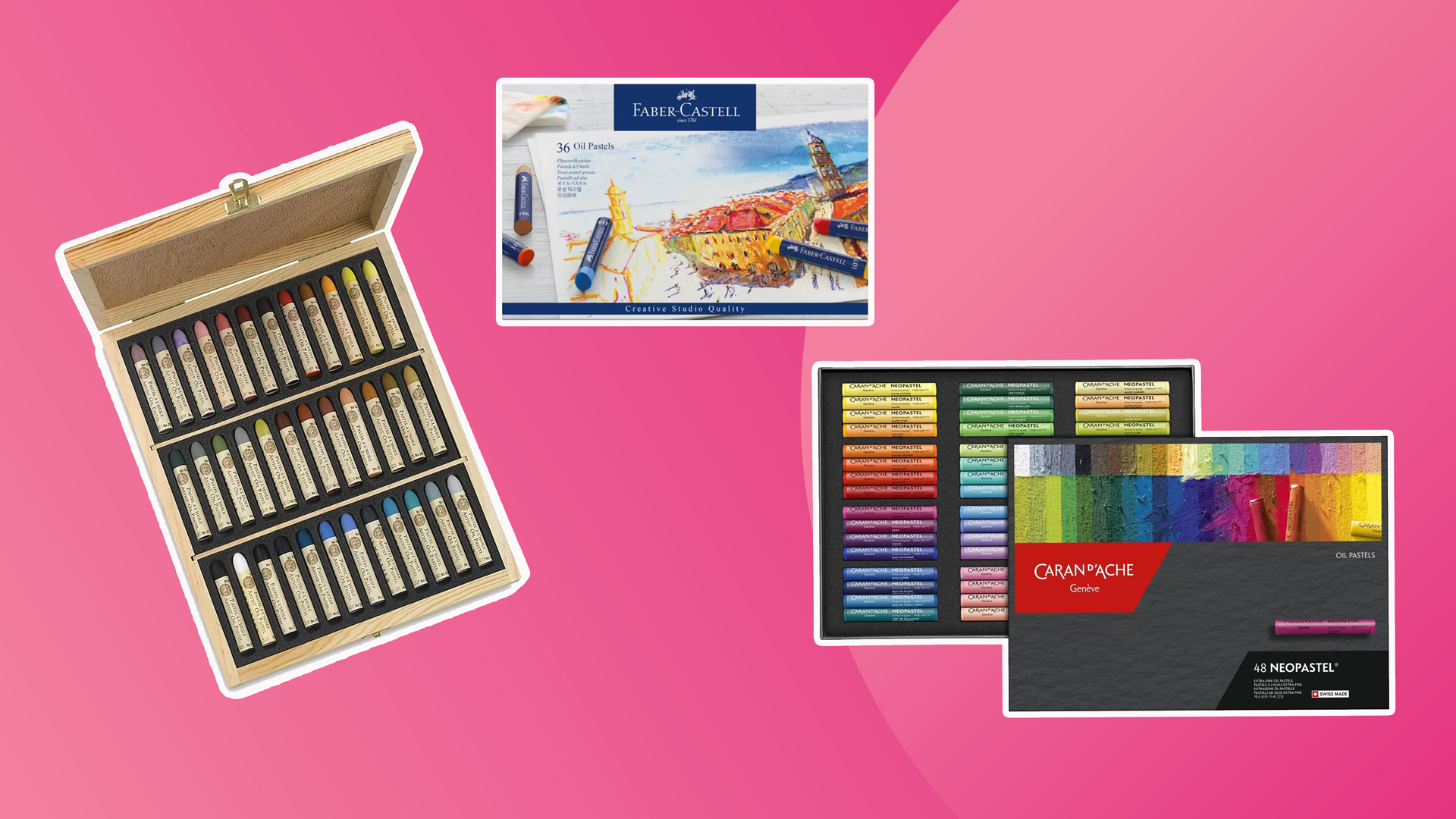
Oil pastels are an under-rated medium and in my opinion, should be much more popular. They are instantly useable and versatile, have brilliant colour ranges and can be great used with mixed media. On this page, I've gathered a range of oil pastels based on my experience with the products – I tested them all using a range of styles and techniques.
In my tests, I evaluated the oil pastels in terms of hardness, ease of blending and application and lightfastness, considering how they compare with each other. If you need further pointers, see the questions section at the bottom of this guide.
If you want more art supplies, see these guides to the best easels and best pastel pencils. But for now, these are the wax-based oil pastels I recommend.
The best oil pastels available now
Why you can trust Creative Bloq
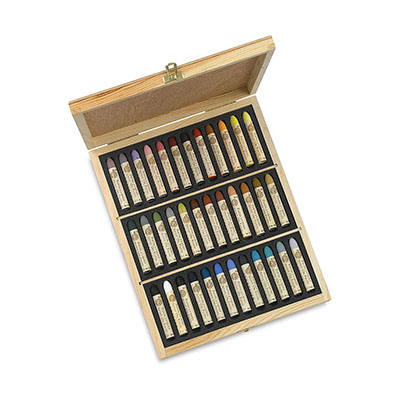
Quality: professional
Quantity: 1–120
Softness: soft
These are the top oil pastels on the market. They were originally developed in France in 1949 at the request of Picasso, who wanted an easily applied colour-fast medium for his drawings. The brand has been going strong ever since. The large range of colours all have high lightfastness established over a long period of time. Special bindings make these richly pigmented, and they are the softest oil pastels you can buy. They have a lipstick-like quality which means they are smooth in application and will go on your surface easily. Blending qualities are exceptional and great subtlety of effects can be achieved.
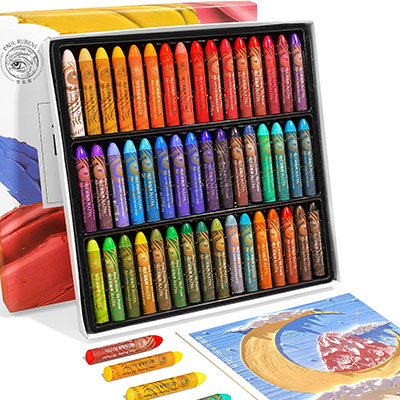
Quality: intermediate
Quantity: 4-72
Softness: soft
Paul Rubens oil pastels originate in China, and they are a reasonably priced set of oil pastels suitable for beginners. Having said that, most of them are equal in softness to my top pick and this makes blending with them very easy, although some can leave a slightly oily residue. There is inevitably a little less consistency in softness because of the more economical manufacturing process. There is no information on lightfastness, but a good sign is that they have strong, saturated colours. Having 72 colours in the range also helps too. However, you can't buy individual colour sticks, except for small boxes of white.
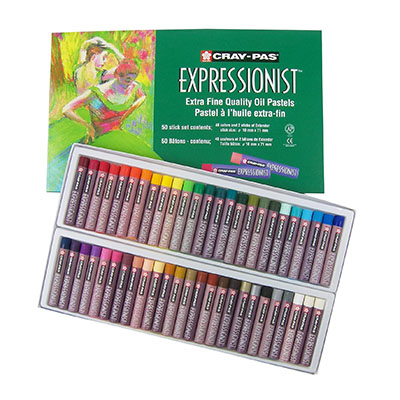
Quality: intermediate
Quantity: 12–48
Softness: medium/soft
These economical oil pastels are still relatively soft and therefore blend well. They have a good reputation as a starter brand. The colours are good and excellent lightfastness is claimed but it will be slightly less than the top oil pastels as there will be more filler. This means that the colours are slightly less intense, but this is relative with oil pastels as they are generally very heavy in proportion of pigment right down to the most economical ranges.
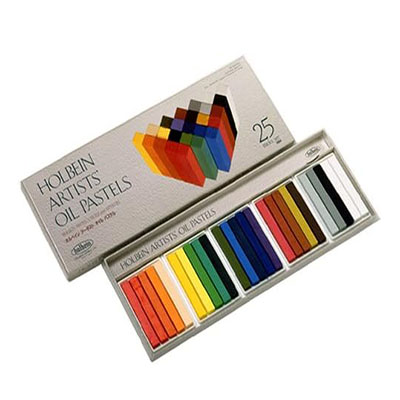
Quality: professional
Quantity: 1–140
Softness: soft
This is the second of the professional grade oil pastels reviewed here and it has the highest range of colours. They are a similar top price to the Sennelier but differ in shape, coming in rectangular sticks. This can help get thinner lines and allows you to use the side of the stick for wide strokes as there is no paper sleeve on them. You must be clean in handling these pastels as the colour transfers to the fingers easily. The higher price is a marker of good lightfastness, and their blending ability is again outstanding.
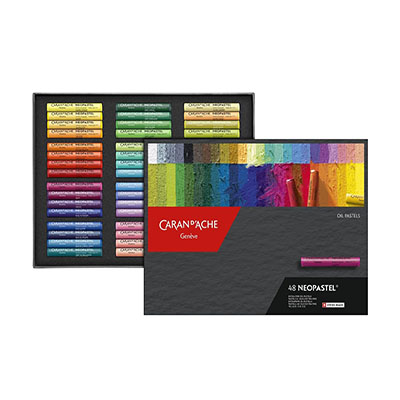
Quality: professional
Quantity: 1 – 96
Softness: Soft
Caran d’Ache Neopastels come from Switzerland and have a large range of strong colours. They blend very well and have excellent lightfastness. They are slightly cheaper than the other two professional makes, which would make them a good starter choice if you wanted better than intermediate quality as your initial experience of the medium. They are slightly harder than the Holbein and Sennelier brands and are available to buy in single sticks.
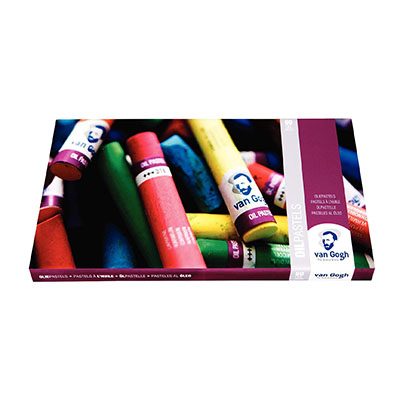
Quality: intermediate
Quantity:1 - 60
Softness: soft/medium
With a range of 60 colours and an affordable price, these Van Gogh oil pastels are an attractive buy for beginners. They are still relatively soft (but not quite as soft as the three professional brands) and therefore blend well. The colours are high in pigment and have a three-star 100-year lightfastness rating. They have the advantage of being available as single sticks from some retailers.
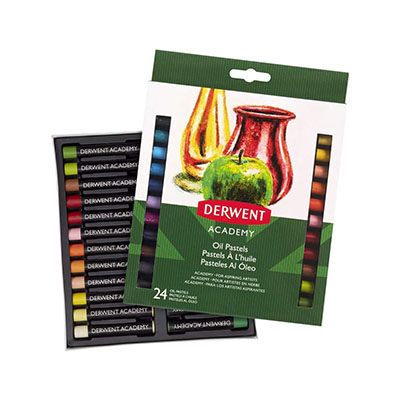
Quality: intermediate
Quantity: 12–24
Softness: medium
The lower price of this range reflects their cheaper mix of fillers and pigment. Derwent doesn't give lightfastness information on this set. Blending is as reasonable as you would expect with a medium hard oil pastel. The only drawback with this range is its lack of colours (only 24) and therefore you may need to supplement with individual sticks of others.
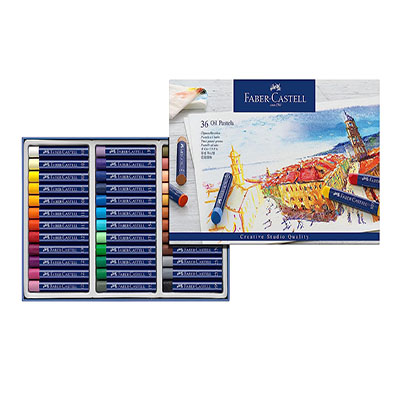
Quality: intermediate
Quantity: 3–60
Softness: medium
This is another reasonably priced beginner’s option that has an attractive range of colours and a good ability to blend. Faber Castell does not produce lightfastness statistics for its oil pastels, which it does for its many pencil products, but the colours are intense and blend reasonably well. The firm is obviously aware of the need for longevity of colour.

Quality: intermediate
Quantity: 12–72
Softness: medium
Inscribe can be found as a budget set of oil pastels in many art shops and they claim high pigmentation and good lightfastness. This places them in the same category as the Faber Castell and Van Gogh oil pastels and they're a particularly popular option in the UK.
What are oil pastels?
Oil pastels differ from soft pastels in the binder used to make the sticks. They are a combination of powdered pigment, waxes and oils in varying combinations for each manufacturer. They are cleaner than soft pastels as they stick to paper more easily and are tidy if you keep your hands clean. They can be dissolved in white spirit and linseed oil, which soften them and allow them to be used like oil paints.
There are water-based oil pastels, but they are a slight contradiction in terms and are not as satisfying to use as pure oil-based pastels. Due to their softness, oil pastels blunt easily but can be sharpened with a knife. Blending oil pastels and using sgraffito techniques gives them great flexibility.
Combining oil pastels with paint underpainting is often very successful as the sharpness of painted line can be combined with the intense colour and cover of the oil pastel. Fixing oil pastels is difficult and they remain sticky for a number of years until a proportion of their oils have evaporated. There are fixatives on the market but beware of the sheen that they can add to a work, which can be plastic-looking and is not always very attractive. The best solution is to mount any work with a passe-partout under glass.
How do I choose the best oil pastels?
There are a lot of oil pastels on the market but there are three definite market leaders, Sennelier, Paul Rubens and Holbein, which will give you a good experience of the medium from the outset. They are more expensive than the other ranges we've talked about, but you may wish to select a starter box of one of the intermediate oil pastel ranges to get the feel of the medium and avoid an expensive mistake. However, it might be useful to add to your intermediate choice a small selection of the individual pastels from one of the top ranges for comparison purposes.
If you like blending, then the more expensive pastels will inevitably serve you better. Medium softness pastels sometimes skid over each other as they are not always the same hardness. This can sometimes be overcome by reversing the order that you put down the two pigments – always ensuring the harder one is under the softer.
How we test the best oil pastels
The oil pastels described above have all been tested with a range of projects. We first look at range of colours available, and whether the colours can be bought individually. We also tested the pastels, looking at general feel, messiness, blending and application (how they went on oil pastel paper and other mediums). We also looked at lightfastness (how affected by light the pastels were) over a short period of time, and checked the box for the manufacturer's guidance on lightfastness.
Daily design news, reviews, how-tos and more, as picked by the editors.
An architect artist and architectural illustrator, Richard’s work combines his love of both buildings and painting. He is a member of the Pastel Society and has been working primarily in oil pastel in recent years, producing vibrant cityscapes.

